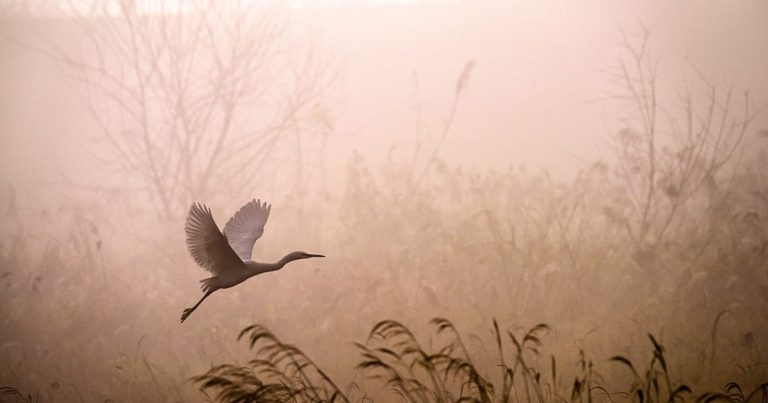Eco-Tourism in the Baltic Forests: Exploring Estonia’s Newly Designated UNESCO Heritage Sites
Estonia, a hidden gem in the Baltic region, is a paradise for eco-tourists. With its vast forests, pristine lakes, and diverse wildlife, this small Nordic country offers a unique blend of natural beauty and cultural heritage. Recently, Estonia’s Baltic forests have gained global recognition with the designation of new UNESCO heritage sites, making it an even more compelling destination for sustainable travel. At TriptoBaltics.com, we believe in promoting responsible tourism that preserves the environment and supports local communities. Join us as we explore Estonia’s eco-tourism offerings, focusing on its newly recognized UNESCO sites and sustainable adventures in the Baltic forests.
Introduction to Eco-Tourism in Estonia
Estonia’s natural landscapes are nothing short of breathtaking. Over 50% of the country is covered in forests, and it boasts more than 1,500 islands, countless lakes, and a coastline that stretches for miles. This abundance of untouched nature makes Estonia a haven for eco-tourists seeking tranquility and adventure.
Sustainability is at the heart of Estonia’s tourism industry. The country has long been a pioneer in environmental conservation, with initiatives to protect its forests, wetlands, and wildlife. As travelers, it’s our responsibility to embrace eco-friendly practices, ensuring that Estonia’s natural beauty remains intact for future generations.
Section 1: Exploring Estonia’s UNESCO Heritage Sites
Estonia’s UNESCO heritage sites are a testament to its rich history and natural diversity. While Tallinn’s Old Town and the Struve Arc have long been recognized, the recent addition of the Baltic forests to the UNESCO list has put Estonia’s natural heritage in the spotlight.
World Heritage Sites in Estonia
-
Tallinn’s Old Town: This medieval marvel is a must-visit for history enthusiasts. Its cobblestone streets, Gothic architecture, and well-preserved city walls transport visitors back in time. While exploring, don’t forget to visit the Town Hall Square and Toompea Castle.
-
Struve Arc: This unique geodetic structure spans ten countries and was used in the 19th century to measure the Earth’s shape. Estonia’s section of the arc is a fascinating blend of science and history.
UNESCO Biosphere Reserves in Estonia
- West Estonian Islands Biosphere Reserve: This reserve encompasses the islands of Saaremaa, Hiiumaa, Muhu, and Vormsi. It’s a biodiversity hotspot, home to rare plant species, migratory birds, and unique coastal ecosystems.
Section 2: Sustainable Adventures in the Baltic Forests
Estonia’s Baltic forests are a playground for nature lovers. From hiking and kayaking to island exploration, there’s no shortage of eco-friendly activities to enjoy.
Hiking and Trekking
- Lahemaa National Park: Located just an hour from Tallinn, Lahemaa is Estonia’s largest national park. Its untouched forests, rugged coastlines, and diverse wildlife make it a hiker’s paradise. Trails like the Viru Bog Walk offer stunning views of the park’s unique landscapes.
Water Activities
- Soomaa National Park: Known as the “Land of Bogs,” Soomaa is famous for its spring floods, which transform the park into a kayaker’s dream. Paddling through the flooded forests is a surreal experience that showcases the park’s natural beauty.
Island Exploration
- Saaremaa Island: This idyllic island is perfect for cycling enthusiasts. Its scenic coastal roads, windmills, and peaceful landscapes make it a must-visit destination. Don’t miss the chance to explore the island’s charming villages and historic sites.
Section 3: Supporting Local Communities through Eco-Tourism
Eco-tourism isn’t just about exploring nature; it’s also about supporting local communities and preserving cultural heritage.
Eco-Villages and Sustainable Living
Estonia’s eco-villages are a shining example of sustainable living. These communities focus on organic farming, renewable energy, and eco-friendly practices. Visitors can participate in workshops, stay in eco-friendly accommodations, and learn about sustainable living.
Local Crafts and Traditions
- Viljandi: Designated as a UNESCO Creative City of Crafts and Folk Art, Viljandi is a hub of traditional Estonian culture. Its annual folk music festival attracts visitors from around the world, while local artisans showcase their crafts in workshops and markets.
Section 4: Sustainable Tourism Tips
To make the most of your eco-tourism experience in Estonia, it’s essential to travel responsibly.
Environmental Responsibility
- Minimize waste by using reusable items like water bottles and shopping bags.
- Stay on designated trails to avoid disturbing wildlife and damaging vegetation.
- Respect nature reserves by following local guidelines and regulations.
Supporting Local Businesses
- Choose eco-certified accommodations and tour operators that prioritize sustainability.
- Support local artisans by purchasing handmade crafts and products.
- Dine at restaurants that use locally sourced ingredients.
Conclusion
Estonia’s Baltic forests and newly designated UNESCO heritage sites offer a unique opportunity to explore nature while supporting sustainable tourism. From hiking in Lahemaa National Park to kayaking in Soomaa and cycling on Saaremaa Island, there’s something for every eco-tourist.
At TriptoBaltics.com, we encourage you to explore Estonia responsibly, embracing its natural beauty and cultural heritage. By choosing eco-friendly practices and supporting local communities, you can help preserve Estonia’s treasures for generations to come.
So pack your bags, lace up your hiking boots, and get ready to embark on an unforgettable eco-tourism adventure in Estonia’s Baltic forests. The journey awaits!








